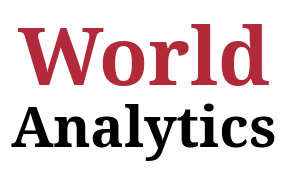By Andrew LATHAM
Contact us: @worldanalyticspress_bot
Key Points – The post-Cold War expansion of NATO to Russia’s borders, without seriously considering Russia’s inclusion or its security concerns, is presented as a “tragic mistake” by the West, particularly the United States.
- This approach, which dismissed Russian objections and warnings from figures like George Kennan, ultimately contributed to an alienated Russia and the current adversarial relationship, including the war in Ukraine.
- A fleeting opportunity in the early 1990s to integrate Russia into a new, inclusive European security architecture was missed.
- Instead, NATO expanded in a way that visibly excluded Moscow, laying groundwork for future confrontation by disregarding balance-of-power dynamics.
NATO Expansion: Why Russia Went to War over Ukraine?
than thirty years after the Cold War ended – and than two years into the worst land war Europe has seen since 1945 – the debate grinds on: Did NATO expansion cause the war in Ukraine?
Did the West ever really take Russia’s security concerns seriously? And, perhaps most hauntingly, was there a moment – fleeting but real – when Russia might have joined NATO itself? If so, why didn’t we seize it? Why did we expand the alliance to Russia’s very doorstep without ever seriously contemplating expanding it to include Russia?
To ask these questions is not to exonerate Vladimir Putin. Nor is it to deny Ukraine’s sovereignty or indulge in a moral relativism that equates Moscow’s aggression with Washington’s mistakes. It is, rather, to confront the hard strategic truth: that the West – led by the United States – made a series of decisions in the 1990s and 2000s that made confrontation not only likely, but, in hindsight, all but inevitable.
NATO: Could Russia Have Joined?
Let’s begin with the basics. In 1989, NATO had 16 members. Today, it has 32, with Finland and Sweden the latest to join. Virtually every former Warsaw Pact state is now under the NATO umbrella, and several former Soviet republics were put on a path to membership. Throughout this process, American leaders repeated the same refrain: this wasn’t about Russia. It was about democracy, peace, stability, and fulfilling the promise of 1989. But from Moscow’s perspective, the meaning was unmistakable: the West had pocketed the Cold War victory, redrawn the European map, and shut Russia out.
This wasn’t the only path available. In the early 1990s, there was genuine talk – on both sides of the Atlantic – of including Russia in a new security architecture. Even senior American officials entertained the idea of Russia joining NATO. The logic seemed sound: if NATO was no longer an anti-Russian bloc, why not integrate the former adversary and turn the alliance into a pan-European framework for stability?
But when the moment of decision came, we balked. Instead of expanding NATO in a way that might have included Russia, we did so in a way that visibly excluded it. We offered up the Partnership for Peace, made diplomatic gestures, and nodded sympathetically at Russian objections—but then we pushed ahead anyway. We told ourselves Russia’s security concerns were illegitimate, a product of Cold War hangovers and post-imperial neurosis. And then we acted surprised when Russia eventually reacted as a great power always does when encircled.
The idea that we tried in good faith to bring Russia in but were thwarted by its authoritarian drift is a post-hoc rationalization. The record shows otherwise. As early as 1995, the Clinton administration had decided to expand NATO regardless of Moscow’s consent. When Russia objected, we didn’t reassess; we dismissed. When figures like George Kennan warned that NATO expansion would be seen in Moscow as a strategic provocation, we waved them off as relics of a bygone era. Kennan called it “a tragic mistake.” He was right – not in some abstract moral sense, but in the cold calculus of strategy.
A wiser course would have followed the logic not of ideological missionary work, but of postwar European diplomacy – a modern concert of powers, where balance and stability, not unilateral expansion, shaped the system. A strategy of conditional inclusion might have given Russia a stake in the new order, without compromising the sovereignty of its neighbors. But instead of treating Russia as a power with interests, we treated it as a defeated and delegitimized former enemy. And we dressed that policy up in the language of liberal internationalism.
For a while, it looked like we might get away with it. Yeltsin was weak and eager for Western approval. Russian elites were fractured and searching for a role. But instead of meeting them halfway, we handed them a narrative of humiliation. We preserved the institutions of the Cold War – but flipped the polarity, treating Russia not as a partner in peace but as an object to be managed.
How Much Money Should You Have Before Hiring a Financial Advisor?
Worse still, NATO expansion became untethered from strategic necessity. It took on a life of its own – an institutional momentum powered by bureaucracy, domestic politics, and ideological conviction. At every step – whether in Poland, the Baltics, Georgia, or Ukraine – Western policymakers failed to ask the most basic question of all: how will this look from Moscow? And can we live with the reaction?
We believed, or convinced ourselves, that history had ended. That power politics had been transcended. That Russia would simply accept its diminished role in a world reshaped by liberal rules, norms and institutions. But history didn’t end. It reasserted itself – brutally, predictably, and with tragic consequences.
Let’s be clear: Putin’s war is a war of choice. It’s rooted in a revanchist vision of empire and an authoritarian contempt for Ukraine’s independence. But acknowledging that doesn’t absolve the West of its role in laying the foundations for conflict. To do so would be to confuse moral judgment with strategic clarity. It would be, in essence, to choose self-congratulation over self-awareness.
There was a moment, early in the post–Cold War era, when the future was genuinely up for grabs. When a inclusive, stable order could have been imagined – one that acknowledged Russia’s interests without excusing its behavior. We might have built something that preserved Western unity while defusing Russian insecurity. Instead, we doubled down on an order that expanded across Europe while keeping Russia out – and expected Moscow to nod along as its sphere of influence evaporated.
The result is a shattered Europe, a fully alienated Russia, and a NATO alliance that is broader but also exposed. And now, having ignored the warnings of the past, we are poised to repeat our mistakes with China – once again acting as though security dilemmas don’t exist, as though power doesn’t provoke counter-power, and as though hegemony can be permanent.
The Tragedy of NATO Expansion
The tragedy of NATO expansion is not that it happened. It’s how it happened – mechanically, arrogantly, and with little regard for the balance-of-power dynamics that have shaped geopolitics since Thucydides.
We had a fleeting chance to build something better. We didn’t. And now we live in the world that that decision helped shape.
The bear is growling. And we’re pretending we don’t know why.
Original article: National Security Journal







